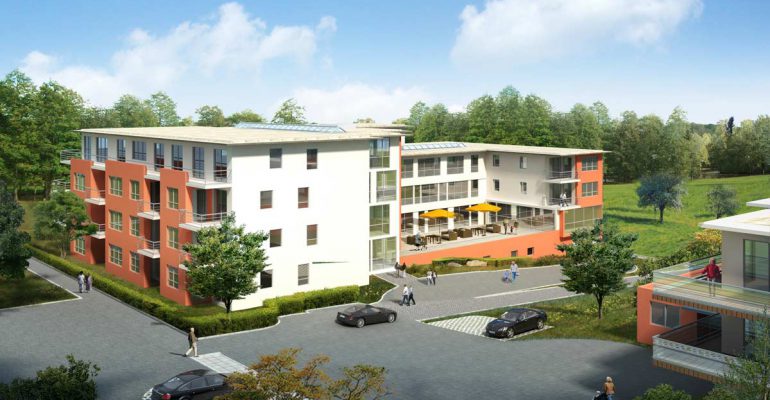Five Reasons to Outsource Your 3D Rendering Work
Visualizations and 3D renderings are central to the work of every design and architecture business. The ability to produce realistic credible images is essential to their success. Clients expect this as a basic service, but it can be difficult for small and medium-sized firms to provide it.
Smaller businesses usually lack the resources to hire a full-time renderer. They want to be able to produce high-quality, impressive renderings in order to please their clients and win grander projects, but they are stymied by the difficulty in producing these time-consuming works.
Optimally, the producers of these 3D renderings will have experience and skill. Designers and architects can access that experience and skill via outsourcing. By outsourcing, small and mid-sized firms can access rendering artists at the drop of a hat, whenever they see the need.
Undoubtedly, outsourcing 3D rendering work is good for business. Here are five reasons why:
1. Better Renderings
Outsourcing companies that specialize in 3D rendering are experts. They possess all the tools and training to produce a top-quality result. Their ownership of the latest technology, software and infrastructure allows them to deliver superior renderings. Because they specialize in rendering, outsourcing companies will keep their employees informed about software updates, computer shortcuts, and industry best practices.
Unlike outsourcing companies, architects and designers are unlikely to have access to all the resources needed for excellent 3D renderings that embody all aspects of a design. Hiring an outsourcing firm will give them unbounded access to that expertise.
2. Cost Savings
An outsourcing company will reduce a designer or architect’s costs at both ends of the process. Firstly, instead of pouring resources into recruiting, hiring and training employees, the firm can count on the outsourcing company to assume the burden of hiring workers. On average, outsourced rendering costs 60% less than maintaining in-house facilities for 3D rendering.
The costs of revisions and change-orders are also drastically reduced with 3D renderings. That’s because a 3D rendering incorporates most elements of a client’s requests, such as color, view, lighting, and textures. When clients see these ideas realized in a rendering, they often change their minds. The beauty of these drawings is in their temporary nature; it’s easy to change an element according to the client’s whims, with no cost other than the renderer’s time.
Furthermore, outsourced 3D renderers will deliver savings on design costs. Dedicated team leaders can maintain contact with the clients, saving the designer the time drain and costs associated with ongoing client relationships.
3. Improved Customer Relations
Your clients are not design professionals. Therefore, it’s usually difficult for clients to picture how the plans will translate into a physical product. They need a 3D rendering in order to fully grasp the final appearance of your design.
Clients won’t want to see one static view of the potential building. Instead, they will seek to understand how the project will appear in all different types of conditions, and how it would look with different types of possible additions.
Renderings can give your clients a full picture. They can show how a building will look in various light patterns, and how it will look in the day and the night. They can provide options for a range of positionings, as well as options of diverse materials and textures. The 3D rendering can also lighten or darken shades in order to highlight particular features of the project.
Additionally, a high-quality rendering can give viewers the sensation of walking through a project. It can flow from outdoor to indoor, showing the exterior and interior of the project and replicating the experience of being on site.
Outsourcing your 3D rendering to an experienced firm will please your clients. Showing them assorted design options before you deliver their completed design will boost their confidence in their design decisions. Ultimately, that will lead to customer satisfaction with your work.
4. Meeting Standards
Most architecture and design firms will have to present their work to a zoning board or design review board for approval. In large cities, zoning and design standards meetings are a regular occurrence for designers and architects.
Presenting a high-quality 3D rendering at those meetings will boost your chances of approval by a board. The board members will want to understand how the design will appear within its environment. A good 3D rendering will help the review board comprehend the nature of the design and to appreciate the design within its context.
5. Enhanced Portfolio
A professional rendering won’t only improve the current project, it can enrich an architect or designer’s business on a grander scale. Hiring outsourcers to create high quality renderings will give the designer a host of projects to show prospective clients. A regularly updated portfolio of images to post on a website or to hang in an office will immeasurably boost the business owner’s brand.
3D technology showcases a designer or architect’s design skill and reduces the time spent discussing and fulfilling client requests. It is a technology of the future that is fully in line with industry trends. Outsourcing your 3D rendering work is the optimal way to access superior work while saving costs, improving customer relationships, advancing your portfolio, and meeting standards.

